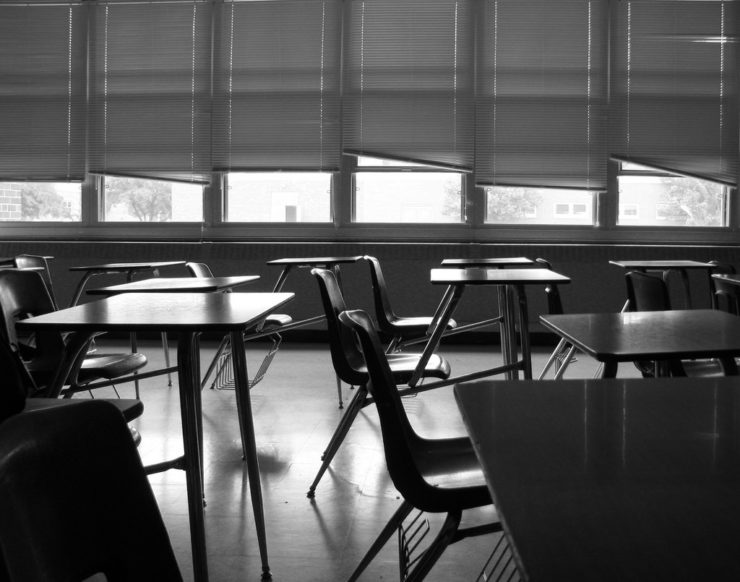
Pennsylvania school districts remain unconstitutionally underfunded. In fact, state funding available for classroom expenses in Pennsylvania has declined by $155.3 million since 2013, and spending gaps between wealthy and poor school districts have widened, according to the petitioners in a lawsuit challenging Pennsylvania’s school funding system.
The case – William Penn School District et al. v. PA Department of Education et al. – filed in 2014 by a group of six school districts, six families, and two statewide organizations, alleges that the state’s school funding system violates Pennsylvania’s constitution due to significant underfunding and gross disparities in allocations that penalize students in low-wealth districts.
The disclosure of the increasing funding gaps between rich and poor districts and the declining state funds available for student needs came in a brief and affidavits filed in the case today by attorneys from the Education Law Center, the Public Interest Law Center, and O’Melveny & Myers LLP, refuting a claim by Senate President Pro Tempore Joseph Scarnati that the lawsuit was rendered moot by the state legislature’s adoption of a funding formula in 2016.
A new analysis from Mark Price, an economist at the Keystone Research Center, is included in the filing, as are affidavits from the superintendents of each petitioner school district – William Penn, Lancaster, Wilkes-Barre Area, Greater Johnstown, Panther Valley, and Shenandoah Valley – and several petitioner parents.
Read the full brief and affidavits here.
“Our affidavits from school districts, parents, and an economist make clear not only that the state has failed to fix a broken funding system, but conditions are actually getting worse, with painful consequences for school children across the Commonwealth,” said Maura McInerney, Education Law Center legal director. “Petitioner school districts don’t have sufficient funding to hire desperately needed teachers and support staff, repair crumbling facilities, or provide critical educational programming. This problem will not be fixed until additional money is added to the education budget.”
For example, an affidavit from parent Tracey Hughes of the Wilkes-Barre School District about the experience of her son (“P.M.H.”) states that “school books are shared between classes, and P.M.H. is not able to bring home books to study or do homework. The books are old and outdated… The facilities at the high school are in bad condition… There are no librarians in any school in the Wilkes-Barre Area School District.”
“If the legislature continues to shortchange schools, a child’s opportunities will continue to be determined by the accident of their zip code.” — Michael Churchill, Public Interest Law Center
As the filing explains, Act 35 of 2016 established a new formula for distributing any increases in the state’s basic education funding. This new formula did not, however, increase statewide education funding. Instead, the law expressly locked in the inequitable and irrational 2013-14 distribution of funds as its baseline. This need-based funding formula applies to only a small fraction – less than 1.4% – of overall education funding in the state. In addition, state education appropriations have not kept pace with rising mandated costs, such as annual unreimbursed pension expenses. Because of this, aggregate state funding available to school districts for classroom costs has effectively decreased by $155.3 million since 2013, according to the affidavit from Price.
“State funding increases have not even kept up with the rise in fixed costs mandated by the Legislature, much less with inflation,” attorney Michael Churchill of the Public Interest Law Center noted. “Only the most wealthy districts can make up for this drain. Our client districts have some of the highest tax rates in the state and are struggling to provide the most basic resources. Any suggestion that the legislature fixed these problems with the formula is absurd. If the legislature continues to shortchange schools, a child’s opportunities will continue to be determined by the accident of their zip code.”
The minimal increase in state funding has meant that the funding gaps between low- and high-wealth school districts in Pennsylvania have also increased in magnitude since the case was filed. Price found that over four years, the gap in per pupil spending between a typical wealthy district and a typical poor district grew from $3,058 per child to $3,778 per child.
“We have long since cut any fat from our district budget. For many years now, we have been cutting through bone,” Shenandoah Valley Superintendent Brian K. Waite wrote in his affidavit. “This impacts all of our students, but particularly those struggling and at-risk students who most need the help to catch up to their peers.” His district has one of the highest tax rates in the state.
“We have long since cut any fat from our district budget. For many years now, we have been cutting through bone.” — Brian K. Waite, Shenandoah Valley School District Superintendent
The lack of adequate state support for education in Pennsylvania is glaring. Pennsylvania ranks 47th out of 50 states, according to US census data, in the portion of education spending that is covered by state funds, at 37 percent, and has the widest disparity between funding for wealthy and poor school districts in the country.
After petitioners filed the case in 2014, the Pennsylvania Supreme Court overturned an earlier dismissal by Commonwealth Court, ruling in September of 2017 that the case was justiciable, and sent it back to Commonwealth Court. Since that ruling, two legislative leaders – Senator Scarnati and Representative Mike Turzai – have tried to dismiss the case or further delay trial. A May 2018 Commonwealth Court ruling dismissed most of their preliminary objections and directed the petitioners to file briefs on the issue of mootness by July 6, giving the legislative leaders until August 5 to reply. While the petitioners have asked the court to direct the legislature address both adequacy and equity, the lawsuit does not seek a certain dollar amount or method to meet both of these needs.
